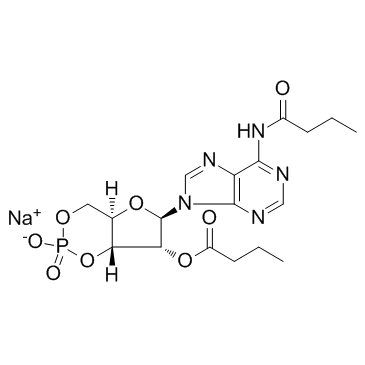The secretogranin II gene is a signal integrator of glutamate and dopamine inputs.
Katsuro Iwase, Akinori Ishihara, Shuntaro Yoshimura, Yoshio Andoh, Masaki Kato, Naohiko Seki, Eriko Matsumoto, Takaki Hiwasa, Dominique Muller, Kohji Fukunaga, Masaki Takiguchi
Index: J. Neurochem. 128(2) , 233-45, (2014)
Full Text: HTML
Abstract
Cooperative gene regulation by different neurotransmitters likely underlies the long-term forms of associative learning and memory, but this mechanism largely remains to be elucidated. Following cDNA microarray analysis for genes regulated by Ca(2+) or cAMP, we found that the secretogranin II gene (Scg2) was cooperatively activated by glutamate and dopamine in primary cultured mouse hippocampal neurons. The Ca(2+) chelator 1,2-bis(2-aminophenoxy)ethane-N,N,N',N'-tetraacetic acid acetoxymethyl ester (BAPTA-AM) and the mitogen-activated protein kinase (MAPK) kinase (MEK) inhibitor PD98059 prevented Scg2 activation by glutamate or dopamine; thus, the Ca(2+) /MEK pathway is predicted to include a convergence point(s) of glutamatergic and dopaminergic signaling. Unexpectedly, the protein kinase A inhibitor KT5720 enhanced Scg2 activation by dopamine. The protein-synthesis inhibitor cycloheximide also enhanced Scg2 activation, and the proteasome inhibitor ZLLLH diminished the KT5720-mediated augmentation of Scg2 activation. These results are concordant with the notion that dopaminergic input leads to accumulation of a KT5720-sensitive transcriptional repressor, which is short-lived because of rapid degradation by proteasomes. This repression pathway may effectively limit the time window permissive to Scg2 activation by in-phase glutamate and dopamine inputs via the Ca(2+) /MEK pathway. We propose that the regulatory system of Scg2 expression is equipped with machinery that is refined for the signal integration of in-phase synaptic inputs. We proposed hypothetical mechanism for the regulation of the secretogranin II gene as a signal integrator of glutamate and dopamine inputs. Glutamate or dopamine activates the Ca(2+) /MEK/ERK pathway, which thus contributes to the signal integration. Concurrently, activation of the PKA inhibitor KT5720-sensitive pathway by dopamine leads to accumulation of the repressor protein X that is otherwise susceptible to proteasome degradation. This repression system may determine the time window permissive to the cooperative activation by in-phase glutamate and dopamine inputs.© 2013 International Society for Neurochemistry.
Related Compounds
| Structure | Name/CAS No. | Molecular Formula | Articles |
|---|---|---|---|
 |
L-Glutamine
CAS:56-85-9 |
C5H10N2O3 | |
 |
Bucladesine (sodium salt)
CAS:16980-89-5 |
C18H23N5NaO8P |
|
ZEB2 drives immature T-cell lymphoblastic leukaemia developm...
2015-01-01 [Nat. Commun. 6 , 5794, (2015)] |
|
Targeting glucose uptake with siRNA-based nanomedicine for c...
2015-05-01 [Biomaterials 51 , 1-11, (2015)] |
|
25-O-acetyl-23,24-dihydro-cucurbitacin F induces cell cycle ...
2015-04-22 [J. Ethnopharmacol. 164 , 265-72, (2015)] |
|
Pro-apoptotic and pro-autophagic effects of the Aurora kinas...
2015-01-01 [Drug Des. Devel. Ther. 9 , 1555-84, (2015)] |
|
SPREDs (Sprouty related proteins with EVH1 domain) promote s...
2015-04-01 [Dev. Dyn. 244(4) , 591-606, (2015)] |